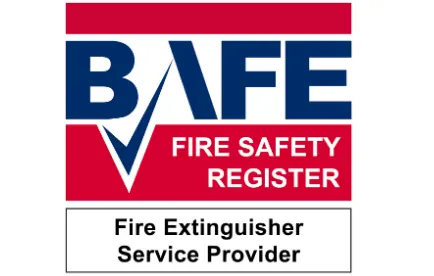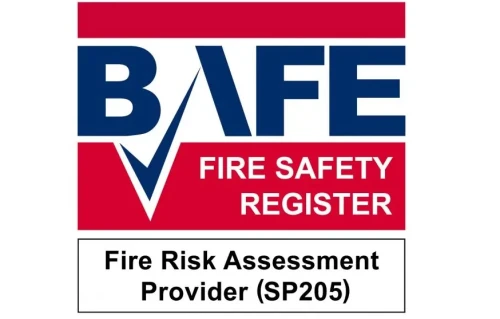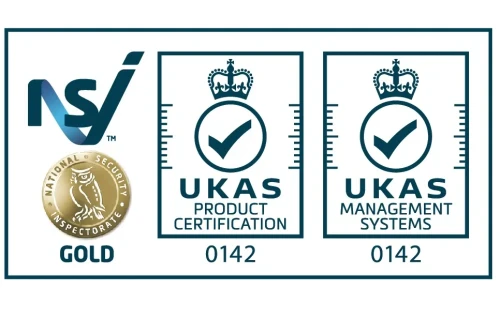Once again excellent service from the team at Safe I S. We have been using them for several years now and recently had five individual fire risk assessments carried out for our business. All in done in a professional timely manner. Final reports delivered promptly immediately after payment had cleared. Highly recommended.
Very good company which we used for servicing of our fire extinguishers. Very knowledgeable and hassle free. Came to refresh some of our fire marshals at a time that suited us. Highly recommend.
Chris Anderson - July 2025
Great Team. Quick response, promising, best service.
Great company, communication is brilliant and speedy response to any queries. All very professional and patient. I have no hesitation in highly recommending them.
Trust worthy training company that delivers at a competitive price!
Great instructor who is very patient and informative!
Wesley Sinclair - June 2025
Very efficient and fast service.
I had an excellent experience with Safe IS thanks to Ashleigh, who went above and beyond to provide outstanding service. He was incredibly professional, attentive, and made the entire process seamless from start to finish. It's not every day you come across someone so dedicated and genuinely helpful—Ashleigh is a true credit to the team!
Atefor Elvira Nana - June 2025
We recently had the pleasure of working with Safe I.S. Ltd for fire warden training at East Croydon Medical Centre, and we couldn’t be more satisfied with the experience.
The training was well-structured, informative, and highly engaging. The trainer demonstrated excellent knowledge and delivered the session with clarity, making complex fire safety procedures easy to understand for all attendees. The practical elements were particularly useful, ensuring our team feels confident and well-prepared to respond in the event of an emergency.
Feedback from staff was overwhelmingly positive, with many appreciating the hands-on approach. It was clear that the session was tailored...
Bruna Batista - June 2025
Excellent service from this company. They provided a really competitive quote for a Fire Risk Assessment. Great communication from the start and our risk assessment was carried out very professionally by Grant. Very helpful with any questions I had. Report was ready within a few days. Superb service.
Susan Kavanagh - April 2025
Very happy with the service I received, needed to be done quickly prior to a property sale and it was.
Avril Bartlett - April 2025
We have used Safe I.S for fire warden training as well as annual fire extinguisher services. Both experiences have been positive and I would recommend this company. The training was clear and to the point, the trainers were knowledgeable and connected well with the trainees. The engineer for the fire extinguisher service was experienced, knowledgeable and carried out the work to a good standard.
Becci Statham - April 2025
We had Safe I.S come and carry out fire warden training for 10 staff, Wayne was a great instructor, very relaxed and knowledgeable.
Neil Redmond - April 2025
Assessor turn up on time. He was very knowledgeable explained things to me. He was very thorough. The list of paperwork that Safe I.S informed us we need for the assessment help immensely.We use them every year good value.
Charles Hill - April 2025
I have been using Safe I.S at various roles for a number of companies I have worked for over the past 8 years, they have always been professional, reliably and affordable. great service throughout.
Matt Prangle - April 2025
Our experience with Safe I.S. for an external fire risk audit was very positive. The process itself was completed in a very timely fashion and the report was ready within a week. Highly recommended!
Efficient, effective and competitively priced service.Efficient, effective and competitively priced service.
Great company, would definitely recommend!!! They are polite, professional and so helpful. They are fantastic at communication and always get back to you promptly.
Louisa Catlin - March 2025
Our experience with Safe I.S. for an external fire risk audit was very positive. The process itself was completed in a very timely fashion and the report was ready within a week. Highly recommended!
Mark Lloyd - February 2025
Very professional, thorough and speedy at affordable rates.
Neil Hughes - February 2025
Came to my place of work to provide fire warden training recently. Nick was very engaging in his presentation style and made sure to interact with me and my colleague throughout the ~3 hours. The session went by quickly and we both learned a lot. I understand that Sonny was there as a trainer in training, but we both found him very polite, and are sure he will excel at the job just like Nick.
Anna Calandra - February 2025
Only made an enquiry here in the end but the advice I received from Oliver was extremely transparent and helpful (resulting in no service needed from them), and he was really quick to get in touch - would definitely trust this company with any future needs :)
Rebecca Warburton - January 2025
Quickest company to get back to me with a fire risk assessment quote. On time and good communication throughout
Elaine Clayfield - January 2025
We use Safe I.S every 3 years for our fire marshall / training. They have excellent service and very good communication. We have had Wayne for the past few years and he is a fantastic instructor, very thorough and knowledgable. Any questions asked he knew the answer to and explained everything in depth. I would highly reccomend. 5 Star.
Emily Dickinson - January 2025
reat easy report to understand and great knowledge from assessor
Yvonne Porter - February 2025
Affordable, reliable, and professional. I’m very happy with my experience!
Abuu Daud - December 2024
We have used Safe IS for a number of years now both at our old premises and our new one. The team are really efficient and help to make fire safety an easy part of compliance and running the business. The fire assessor Mark, in particular is brilliant and takes time out to explain everything in detail, making the whole process extremely stress-free and straightforward
Chiara Manfredi - December 2024
I ran a similar company to yours and since retiring have used several companies to carry out a range of tasks for organisations I am involved with. They all failed in one way or another. I have used safe-is for two separate properties which are ongoing to my complete satisfaction and would recommend them to anyone
Christopher Simmonds - December 2024
Safe I.S carried out a Fire Risk Assessment at our company premises.
They were very thorough and mindful that staff were working and made sure that no-one was interrupted or inconvenienced by their on-site presence. This is the 3rd year we have used Safe I.S and we will more than likely use them again next year for our Risk Assessment needs.
Andrea Allen - November 2024
A great company to deal with, very efficient to deal with and professional.
Gary Miller - November 2024
We have been using Safe I.S. for a few years now for our annual Fire Risk Assessment. Always a great service and good communication with the team. Quick issue of reports after the visit.
Daniella Sheppard - November 2024
Excellent service and communication. Carried out the assessment both efficiently and to great detail whilst providing advise. 10/10 would recommend to anyone!
Nathan Smith - November 2024
The service was professional and robust, the trainer gave good tips which we can follow up on. Good service and a very reasonable cost for the length of time they were on site.
Sara Brown - November 2024
Good communication and prompt arrival at site, easy to obtain documents after paying invoice, overall a good firm to deal with!
Kevin Kennedy - November 2024
Very fast and efficient, the assessor was very informative when carrying out the Risk Assessment.
David Robinson - October 2024
Have been using SAFEIS for a few years for our Fire Risk Assessments and the service is always great. Professional and timely, would recommend.
Brett Meli - October 2024
We hired Safe IS to perform a Fire Risk Assessment for us and were highly impressed with their service. The appointment was quick and easy to arrange and the service provided was excellent, friendly and professional. We would highly recommend their services to other companies or private individuals.
Safe IS conduct our fire risk assessments annually and provide a first class service. Their auditor is courteous and takes time to understand the business while taking into consideration the needs for proper safety regimes to be in place and how they will affect company operations.
Geoff Sargent - October 2024
Very serious and experienced professionals.
Thank you for the training!
Iuliana Ancuta - October 2024
Very quick and easy to arrange 3 fire risk assessments. Everything went smoothly on the day and the reports were sent to me promptly after payment. The reports themselves were very professional but easy to understand. All in all, they did exactly what I needed!
Spot on what's more to say
Michael Rushworth - September 2024
We recently used Safe IS for a fire risk assessment on one of our buildings in Slough, and we were extremely impressed with their service. The team was highly professional, knowledgeable, and thorough throughout the entire process. They provided clear and detailed recommendations, ensuring that we understood all aspects of fire safety and compliance. The report was delivered promptly and was easy to follow. We now feel confident that our building meets the required safety standards. We highly recommend Safe IS for anyone needing a reliable and expert fire risk assessment service
Jodie Saun - September 2024
As always the Safe IS accessor was extremely professional and knowledgeable while conducting the fire risk assessment of our facility and wouldn't hesitate to recommend Safe IS & their accessor to any other organisation.
We have just moved to Safe I.S so far the service has been good. Our fire safety training was given by Reece, who delivered the training well and made sure we understood each topic before moving on. The extinguisher training was a helpful addition. We also purchased a risk assessment, the document produced was in depth and a really valuable document to help ensure compliance. We have now moved all our fire services to Safe I.S.
Charlotte Hewins - August 2024
Very quick and easy to arrange 3 fire risk assessments. Everything went smoothly on the day and the reports were sent to me promptly after payment. The reports themselves were very professional but easy to understand. All in all, they did exactly what I needed!
Good communication, reliable, competitive pricing
Kiasus Workforce - July 2024
Great service received from SafeIS recently completing our annual Fire Risk Assessment, always service with a smile and good suggestions given for improvement to keep us safe. Thank you.
Alicia Cornell - July 2024
Very professional and organized. Expectations are clearly outlined and bookings are always met without excuses.
A great job done! Thank you for conducting a comprehensive risk assessment review supported by competent guidance and recommendations.
Michael Cooper - June 2024
We contacted this company and arranged a fire risk assessment. This was completed painlessly and efficiently. We will defiantly be using this company again.
Kristian Morgan - June 2024
The company understood our availability and restrictions and came on 17/3/24. Nick presented in such a way that everyone present felt they had 100% benefited and that clear important actions can make a big difference whilst staying calm when incidents happen. How fire extinguishers are used and why.
I recommend any organisation to do the training it is well worth it and valuable to safeguard your community.
Thank you for giving us a detailed insight to the role of a fire warden.
Surinder K Sahota
SGSS Croydon Gurdwara
Surinder Kaur Sahota - June 2024
Safe I.S. Ltd where highly recommended and did not disappoint, we had a comprehensive and ready to use report the next day with recommendations and net steps. A value for money and assessment for our needs working with children.
We have been using Safe IS for several years now, and their service has been consistently excellent. What truly sets them apart is their outstanding customer service. The team is always responsive, helpful, and goes above and beyond to ensure our needs are met. Their dedication to client satisfaction is evident in every interaction. Safe IS has proven to be a reliable partner, and we highly recommend their services to anyone looking for a dependable solution backed by great support.
Excellent service and staff, always a pleasure working with the team to ensure we are compliant :)
The training went really well yesterday.
The trainer was very knowledgeable and engaged with everyone. I received amazing feedback from everyone, the ladies felt they learnt a great deal and was always kept interested as there was never any dull moments.
So overall a very successful day.
I have already purchased a fire blanket for my house!
Acorn Engineering Ltd
Helpful and informative visit to my holiday let property.
Edith Reavill - March 2024
Great and professional service! Very happy with customer service.
Maksim Franko - March 2024
Great customer service, competitively priced and helpful staff
Lace Hill Academy - March 2024
Great experience with this company from start to finish with booking our Fire Warden Training course. We really enjoyed the course and were very impressed with the trainer Reece - so professional, informative and engaging. Would highly recommend Safety I.S. for your training needs. Great customer service and we received our Certificates promptly. Thank you!
We have used Safe IS for both our office fire risk assessment and annual fire extinguisher testing.
I have to say Nick, who performed our risk assessment was very professional, but also made it a straightforward experience for us. He applied a very pragmatic approach, and gave us some good advice for improvement measures.
I would highly recommend Safe IS - and in fact I have recommended them to other tenants on other floors in my office building.
Emma Walker - November 2023
Safe I.S carried out a Fire Risk Assessment at our company premises.
They were very thorough and mindful that staff were working and made sure that no-one was interrupted or inconvenienced by their on-site presence.
This is the 3rd year we have used Safe I.S and we will more than likely use them again next year for our Risk Assessment needs.
Andre Allen - November 2023
Positive: Professionalism, Punctuality, Quality
Safe I.S. delivered our in-house Fire Warden training in a relatable, friendly, yet professional way, with the onus on the seriousness of the topic. Having completed similar training multiple times over the years, this session STILL gave us all something new to take away. Safe I.S. offer reassurance in their experience and in accreditation. Would recommend for all business fire safety needs.
Elizabeth Court - November 2023
Positive: Professionalism, Quality
We have recently had our Fire Warden training provided by Safe I.S Ltd. We found them very professional, knowledgeable and the training was enjoyed by all. This is the second time using this company and we will continue to use them in the future.
Old Rectory - October 2023
Positive: Professionalism, Punctuality, Quality, Responsiveness, Value
Straightforward fire safety inspection, their expert attended site and talked us through the process and gave advice for any issues that were found and ways to improve
Geoff Sargent - October 2023
Positive: Professionalism, Punctuality, Quality, Responsiveness, Value
We use SAFE IS for our fire risk assessments, specifically Nick. Happy with their service and I regularly recommend them.
Positive: Professionalism, Punctuality, Quality, Responsiveness, Value
Very good service - all attendees were more than happy with the training provided. It was on time, and for a good price. I would highly recommend!
Paulinha Kujawska - September 2023
Positive: Professionalism, Quality, Value
Great training, enjoyable session, nice trainer!
Sarah Mackie - September 2023
Positive: Professionalism, Punctuality, Quality, Responsiveness, Value
Great training very professional loads of brilliant information.
would highly recommend this company.
Lisa Harper - September 2023
Positive: Professionalism, Quality, Value
Safe IS has conducted a fire warden training for my colleagues. It was very practical and informative. The trainer made it really interesting to listen to.
Nimantha Liyanage - July 2023
Always receive great service from SafeIS, prompt and speedy service, very efficient. Thank you.
Positive: Professionalism, Punctuality, Quality, Responsiveness, Value
With a lot of new office openings over the last few months, I have had to organise a lot of Fire Risk Assessments.
The most recent one was in Brighton by an assessor called Rick Davidson from Safe I.S. who I honestly can't praise highly enough.
He was genuine, professional and very knowledgeable, and his assessment reflected all three of those positive traits.
I've never had an issue with Safe I.S. and I honestly can't recommend them enough.
Positive: Professionalism, Punctuality, Quality, Responsiveness, Value
So Far Safe I.S have attended our business to complete our fire extinguisher course and our fire assessment on both occasions they have been outstanding in every way
Positive: Professionalism, Punctuality, Quality, Responsiveness, Value
We have been using Safe I.S Ltd for several years now and I am extremely satisfied with their service.
Excellent communication from first contact.
Their trainers are all professional, responsive and knowledgeable about the subject.
Would definitely recommend.
Positive: Professionalism, Punctuality, Quality, Responsiveness, Value
Silvia Monteiro - May 2023
Positive: Professionalism, Punctuality, Value
HopeCapital Scans - April 2023
Positive: Professionalism, Quality
Professional, no fuss service from start to finish.
Highly recommended if you want a stress free experience.
Very easy to book. Excellent Courses and Certification excellent.
Joanne Neale - March 2023
Positive: Professionalism, Punctuality, Quality, Responsiveness, Value
Temple Grove Bosses - January 2023
Positive: Professionalism, Punctuality, Quality, Responsiveness, Value
Very quick to arrange attendance and the report is very easy to read but thorough.
Great communication and very friendly and happy to answer all my questions.
Jade Bratton - January 2023
We have used Safe IS for a number of years now and the new blocks we are starting to manage we have asked SAFE I.S. Ltd to carry out the fire risk assessment very informative and very quick to respond to any queries be it by phone or email. I have been dealing with Chloe in the office and she is very good
Positive: Professionalism, Punctuality, Quality, Responsiveness, Value
Me and my team really enjoyed the training. It was very interactive rather than some trainers just like to talk at you. Would recommend. Thank you
Janineberry10 - January 2023
Professionalism, Punctuality, Quality, Responsiveness, Value
Have used Safe I.S. for a number of years at the office I manage in London. They are very professional, efficient, have assisted me on many queries, and helped us to be compliant in our new office. They also trained the Fire Wardens at the new office, Clive our instructor was fantastic, a great instructor and made the whole course really enjoyable.
Maria Goldfinch - December 2022
Professionalism, Responsiveness
Positive: Professionalism, Punctuality, Quality, Responsiveness
A very good company to work with.
Vale Training - November 2022
Positive: Professionalism, Quality, Value
A friendly team, approachable and professional. We have had Fire Risk assessments carried out by Safe I.S and would strongly recommend them for your business fire safety needs.
A Creative UK - November 2022
Positive: Professionalism, Punctuality, Quality, Responsiveness, Value
I booked Safe I.S. for a couple of sessions at our work place to give Fire Marshal training to staff. The feedback from my team was only positive, they found the training very engaging and useful. They're now all spotting the potential fire risks and taking fire drills and alarm tests more seriously! Will certainly use again when we need to get more staff trained.
Andrew David - October 2022

.webp)
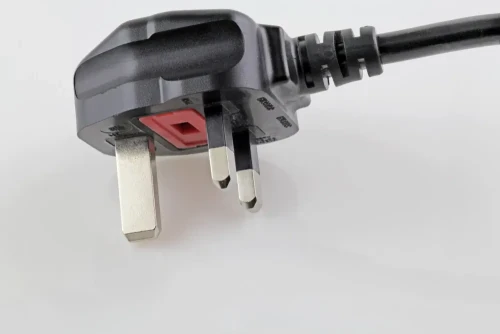
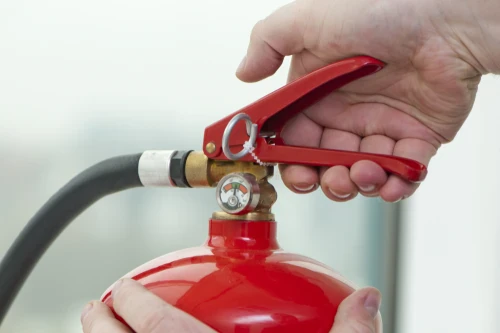
.webp)


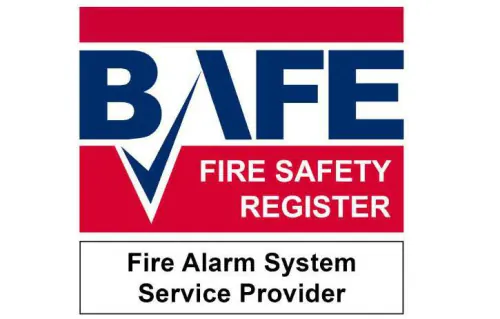
.webp)
